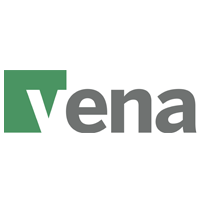MAKING THE RIGHT BUSINESS SOFTWARE CHOICE
With such a wide range of budgeting & planning software options available, companies are faced with a huge challenge when making the right choice of planning tools for preparing and forecasting budgets.
Many financial forecasting systems can appear very similar, so we help our clients select the right choice for their company by providing extensive market knowledge and experience to cut-through the maze of competing solutions to deliver the most appropriate business forecasting software for your budgeting and planning system.
Our fully supported software options from IBM and Vena Solutions easily overcome spreadsheet issues and effortlessly enable all key business systems to be integrated for financial and operational plans across your organisation.
Financial forecasting software that can deliver ease of use with powerful capabilities is only part of the key to success however.
InfoCat focus on the delivery of these capabilities. Our long experience of this discipline enables us to deliver world class financial forecasting systems to our clients. Try our selection process today.
Get Expert Insights on a Range of Financial Forecasting Systems
Whether you are completely new to FP&A Budgeting & Planning software or are an experienced business finance professional, our advice has proven to be invaluable to our clients. Read our Case Studies overviews to find out more.
Business Forecasting Software for Budgeting and Planning
InfoCat have a long history of supporting Cognos TM1 and IBM Planning Analytics budgeting and forecasting software. More recently, we have diversified to include Vena Solutions software within our portfolio of budgeting and forecasting tools. The addition of Vena Solutions enables us to provide faster implementations to companies who already have a well-developed Excel-based budgeting system, and who need to convert their solution to a more easily managed and automated system capable of full Corporate Performance Management capabilities.How Modern Budgeting & Planning Software Improves Your Finance Teams Processes
You either rely solely on spreadsheets for your budgeting processes, or have identified the need for a more integrated Corporate Performance Management system. There are pro's and con's with either approach and you need to make the right choice for your environment. Both options should provide you with easy control, collaboration, and a single version of the truth. Hover over the the headings in the boxes immediately below this text to uncover some of the key areas for consideration.
Centralised Data Mapping
Without a centralised data mapping capability, version control, plus amendments, resubmissions, your approval processes and more, become cumbersome and expensive overheads to manage.
Integrates All Business Systems
Numbers often need context. Any system should provide an easy means to drill-to-detail and provide the full story behind the headlines. Ensure that your FP&A tool can easily integrate all business data and systems.
Finance Automation
Automation is coming to the office and it's arriving fast. Financial processes that were once regarded as tedious monthly requirements can be easily automated, leaving you more time to run your business effectively.
Financial Transformation
Making the finance function digital is a key imperative for many companies. Any new system must be capable of delivering a digital solution for a finance-led culture.
Top Features That Deliver Better Forecasting Tools for Business
Financial Analytics
Gain clarity and focus across all areas of your business.
Driver Based Forecasting
Enable in depth analysis of your key financial drivers.
Budget, Plan, & Forecast
Combine 'top down' and distributed 'bottom up' processes.
Operational Planning
Deliver real-time calculation and consolidation.
Scenario Planning
Conduct 'what-if' analysis quickly and accurately.
Leverage Excel
Use existing reports while reducing spreadsheet errors.
Cashflow Forecasting
Accelerate your cashflow analyses & gain faster insights.
Faster Consolidations
Increase accuracy, transparency, and access to information.









